Birdfinding.info ⇒ Uncommon and little-known, the nominate form of the Lesser Antillean Barn Owl seems to be found most often near the southwestern and northeastern tips of Grenada: in Mount Hartman National Park and adjacent neighborhoods, and in the vicinity of Levera National Park. Many of these reports are from seaside resorts, presumably in part because the grounds are well-lit and well-attended. Most reports from St. Vincent are from the settled areas at the southern end of the island, likely for the same reason. (For the Dominican form, see “Dominica Barn Owl”.)
Lesser Antillean Barn Owl
Tyto insularis
Endemic to the Lesser Antilles: Dominica, St. Vincent, the Grenadines, and Grenada. Recent records from the Grenadines have been on Union, Carriacou, Ronde, and Caille. Previously also reported from Bequia.
Comprises two distinct forms: the “Dominica Barn Owl” (nigrescens) of Dominica, and the “Grenadian Barn Owl” (insularis) of St. Vincent, the Grenadines, and Grenada.
Identification
Both forms of the Lesser Antillean Barn Owl are mostly dark-brown above and buffy or tawny below, with a rusty or vinaceous facial disk. They differ noticeably in pattern.
The “Grenadian Barn Owl” has dark-brown upperparts with gray tones and tan blotches interspersed, and densely speckled with conspicuous white spots.
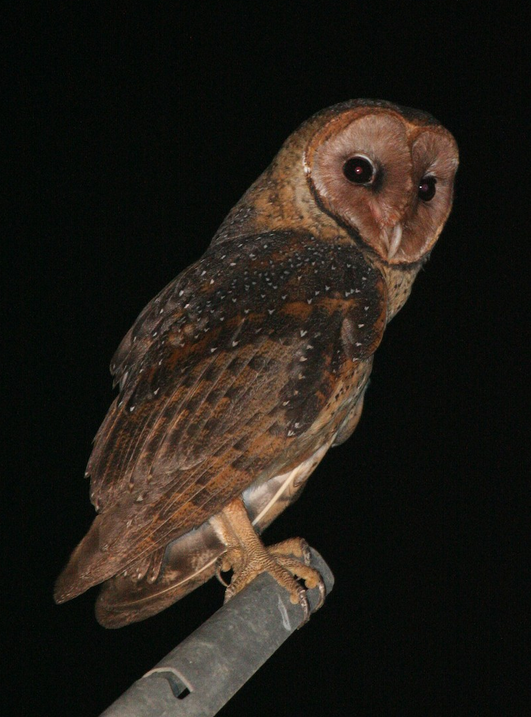
Lesser Antillean Barn Owl, T. i. insularis, showing dark-brown upperparts with tan blotches and dense white spots. (Arnos Vale, St. Vincent; April 7, 2008.) © Alvaro Jaramillo

Lesser Antillean Barn Owl, T. i. insularis, showing dense pale-centered spots on underparts. (Grenada; June 20, 2013.) © Pete Morris
The underparts are heavily marked with dark-brown spots that sometimes have pale-gray centers.
The upperside of the wing shows pronounced alternating dark-brown and buffy bands.

Lesser Antillean Barn Owl, T. i. insularis, showing pale bands on wings. (Mount Hartman, Grenada; December 18, 2016.) © Karen Chiasson

Lesser Antillean Barn Owl, T. i. insularis, presumably a male with comparatively pale facial disk and underparts. (St. George’s, Grenada; December 25, 2015.) © Alan Lewis
The sexes differ in the tones of the underparts: relatively pale and buffy on males; darker and cinnamon on females.
“Dominica Barn Owl”. Judging from the relatively few available photos of the two forms, the Dominica form differs noticeably from the Grenadian form in having uniformly dark-brown upperparts, lacking the gray tones and tan blotches, and much finer, sparser white speckles that are barely discernible, if at all, in most photos.
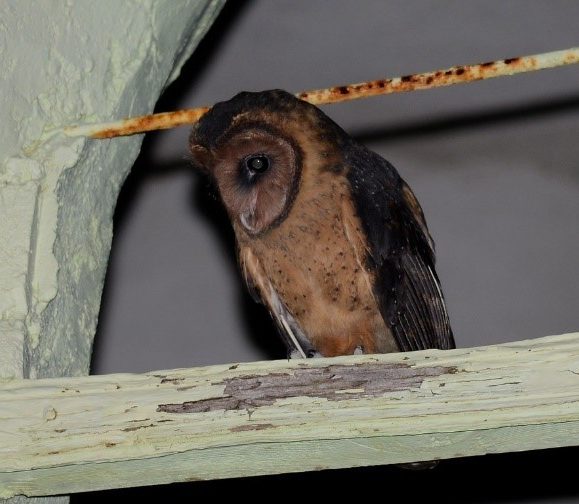
“Dominica Barn Owl,” T. i. nigrescens, showing uniformly dark-brown upperparts with tiny white specks. (St. Paul & St. Anne Catholic Church, Massacre, Dominica; March 21, 2014.) © Alan Van Norman
The Dominica form also differs in that it lacks distinct bands on the uppersides of its wings, and has sparser, finer dark speckles on its underparts.
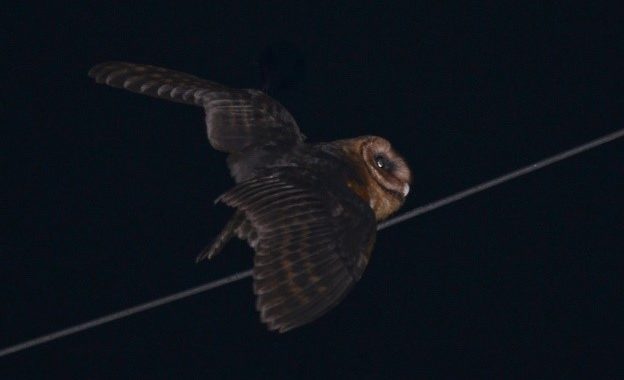
“Dominica Barn Owl,” T. i. nigrescens, showing uniformly dark-brown upperparts with subtle bands on wings. (St. Paul & St. Anne Catholic Church, Massacre, Dominica; March 21, 2014.) © Alan Van Norman
Voice. The typical rasp call of the Grenadian form is high and thin compared to the equivalent call of the American Barn Owl:
Peter’s Hope, St. Vincent; January 31, 2023, © Michael Akresh; and
St. George’s, Grenada; June 16, 2017, © Josep del Hoyo.
The Grenadian form also gives a high, thin kreeee:
Arnos Vale, St. Vincent; April 7, 2008, © Alvaro Jaramillo; and
Caille, Grenada; July 12, 2022, © Kenrith Carter.
There appear to be no publicly available recordings of the Dominica form. König & Weick (2008) state that: “A piercing scream and clicking notes have been recorded on Dominica.” Additional recordings and/or careful descriptions of vocalizations from both populations would help to clarify their relationship.
Notes
Polytypic species consisting of two recognized subspecies that are distinct forms: the “Grenadian Barn Owl” (insularis) of St. Vincent, the Grenadines, and Grenada; and the “Dominica Barn Owl” (nigrescens) of Dominica. Traditionally classified as subspecies of the Barn Owl (T. alba) and more recently as subspecies of either the American Barn Owl (T. furcata) or the Ashy-faced Owl (T. glaucops).
More Images of the Lesser Antillean Barn Owl
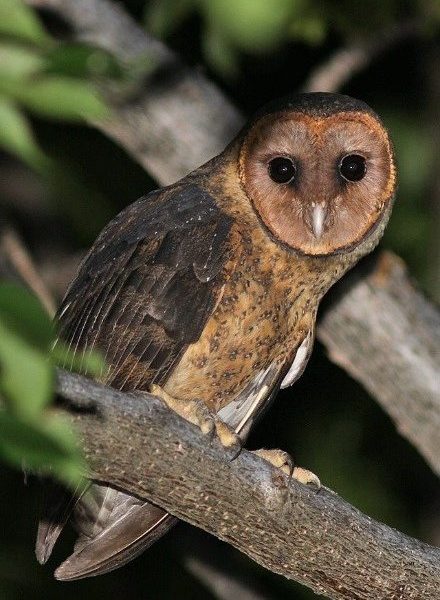
Lesser Antillean Barn Owl, T. i. insularis, showing white speckles on upperparts and pale-centered spots on underparts. (Grenada; June 21, 2013.) © Pete Morris

Lesser Antillean Barn Owl, T. i. insularis, showing grayish-brown upperparts with tan blotches and white speckles. (Mount Hartman National Park, Grenada; February 28, 2011.) © Mikko Pyhälä

“Dominica Barn Owl,” T. i. nigrescens. (St. Paul & St. Anne Catholic Church, Massacre, Dominica; March 21, 2014.) © Alan Van Norman
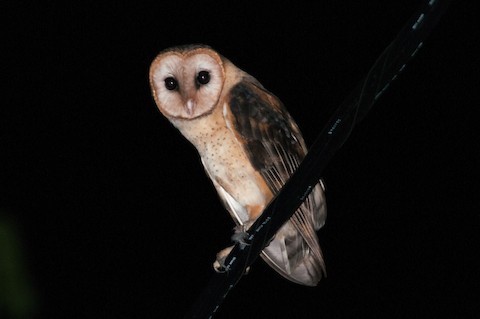
“Dominica Barn Owl,” T. i. nigrescens, a relatively pale male. (Colihaut, Dominica; November 12, 2009.) © John C. Mittermeier
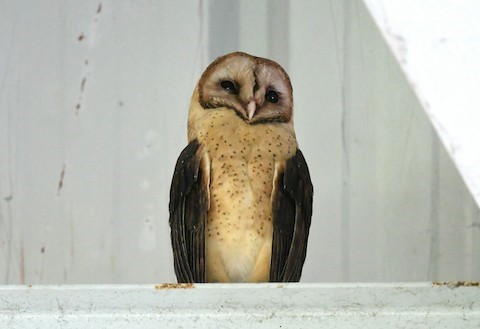
“Dominica Barn Owl,” T. i. nigrescens, male. (St. John & St. Lewis Catholic Church, Portsmouth, Dominica; March 23, 2023.) © Gary Chapin
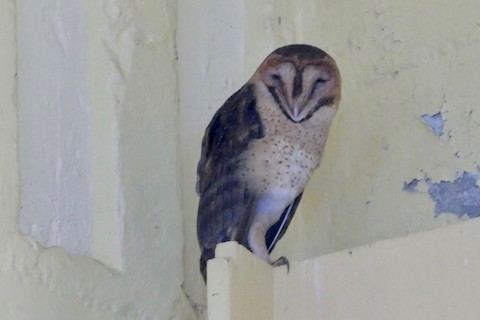
“Dominica Barn Owl,” T. i. nigrescens, male with face “folded” during daytime rest. (St. Paul & St. Anne Catholic Church, Massacre, Dominica; October 19, 2018.) © Peter Kaestner
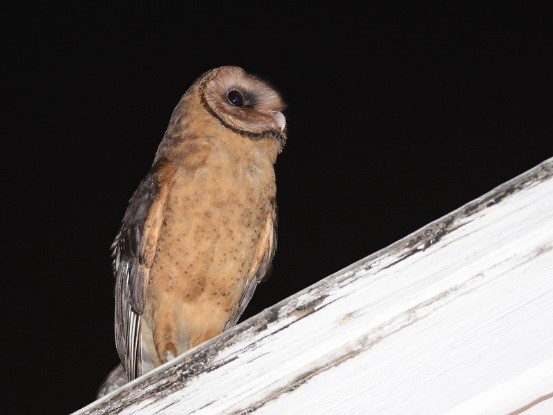
“Dominica Barn Owl,” T. i. nigrescens, male showing profile of its facial disk. (St. Paul & St. Anne Catholic Church, Massacre, Dominica; March 21, 2014.) © Alan Van Norman

“Dominica Barn Owl,” T. i. nigrescens, female. (St. Paul & St. Anne Catholic Church, Massacre, Dominica; March 21, 2014.) © Alan Van Norman
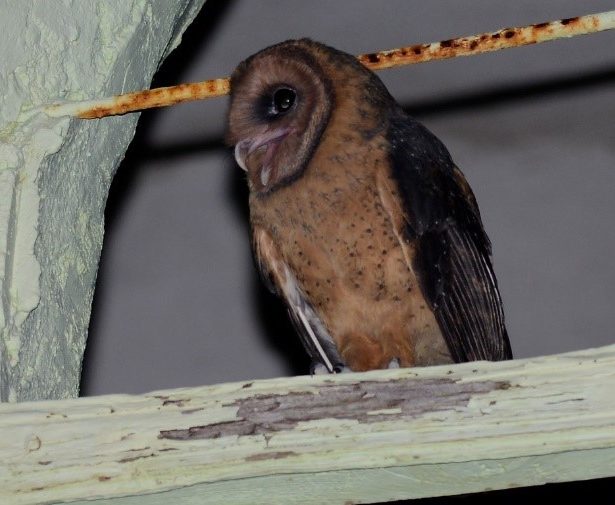
“Dominica Barn Owl,” T. i. nigrescens, female, vocalizing. (St. Paul & St. Anne Catholic Church, Massacre, Dominica; March 21, 2014.) © Alan Van Norman

“Dominica Barn Owl,” T. i. nigrescens, female, showing the deep cinnamon tone of the underparts. (St. Paul & St. Anne Catholic Church, Massacre, Dominica; March 21, 2014.) © Alan Van Norman
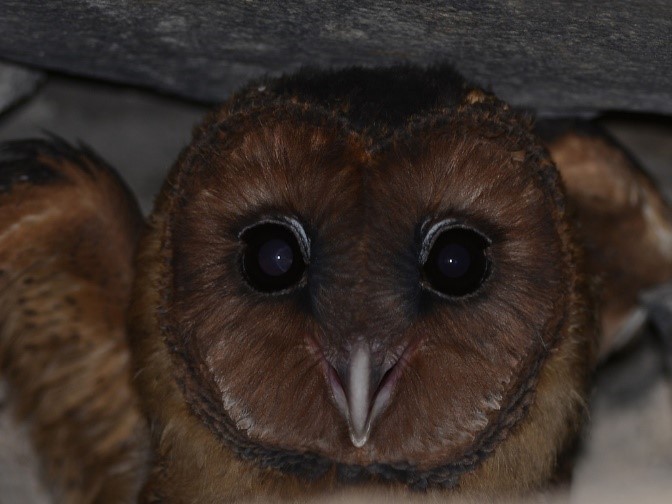
“Dominica Barn Owl,” T. i. nigrescens, facial close-up. (St. Paul & St. Anne Catholic Church, Massacre, Dominica; March 21, 2014.) © Alan Van Norman
References
Aliabadian, M., N. Alaei-Kakhki, O. Mirshamsi, V. Nijman, and A. Roulin. 2016. Phylogeny, biogeography, and diversification of barn owls (Aves: Strigiformes). Biological Journal of the Linnean Society 119:904-918.
eBird. 2023. eBird: An online database of bird distribution and abundance. Cornell Lab of Ornithology, Ithaca, N.Y. http://www.ebird.org. (Accessed September 29, 2023.)
Enríquez, P.L., K. Eisermann, H. Mikkola, and J.C. Motta-Junior. 2017. A Review of the Systematics of Neotropical Owls (Strigiformes), Neotropical Owls: Diversity and Conservation (P.L. Enríquez, ed.). Springer International Publishing, Cham, Switzerland.
iNaturalist. 2023. https://www.inaturalist.org/. (Accessed September 29, 2023.)
Kirwan, G.M., A. Levesque, M. Oberle, and C.J. Sharpe. 2019. Birds of the West Indies. Lynx Edicions, Barcelona.
König, C., and F. Weick. 2008. Owls of the World (Second Edition). Yale University Press.
Mikkola, H. 2013. Owls of the World: A Photographic Guide (Second Edition). Firefly Books, London.
Raffaele, H., J. Wiley, O. Garrido, A. Keith, and J. Raffaele. 1998. A Guide to the Birds of the West Indies. Princeton University Press, Princeton, N.J.
